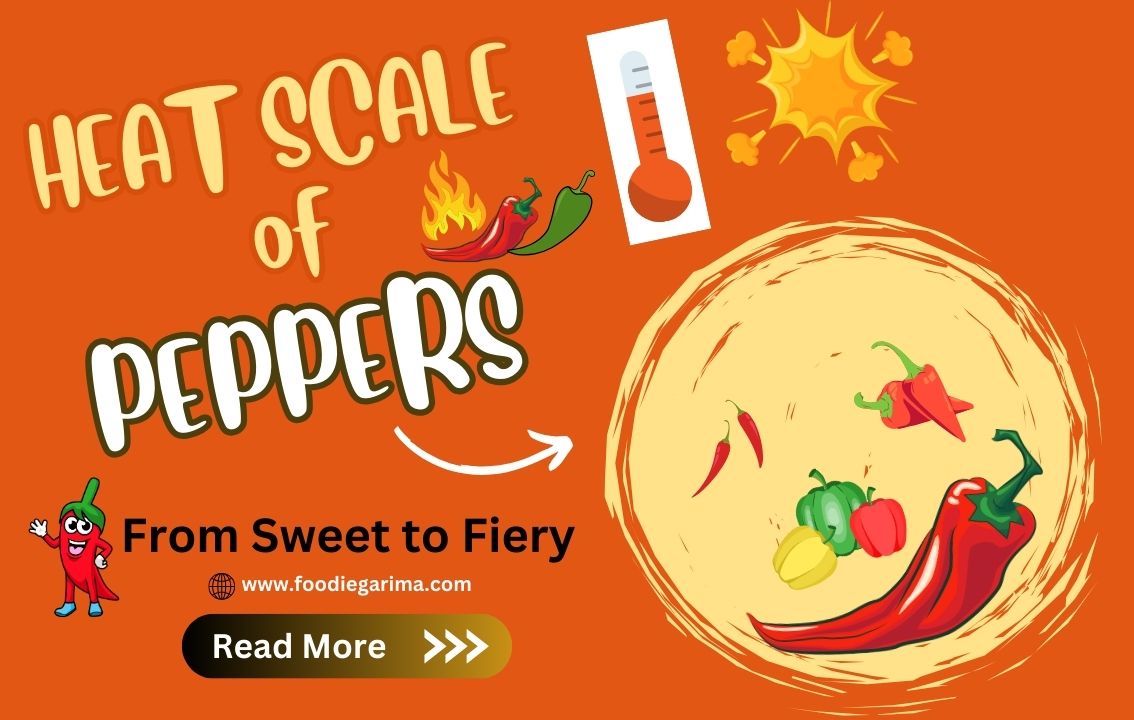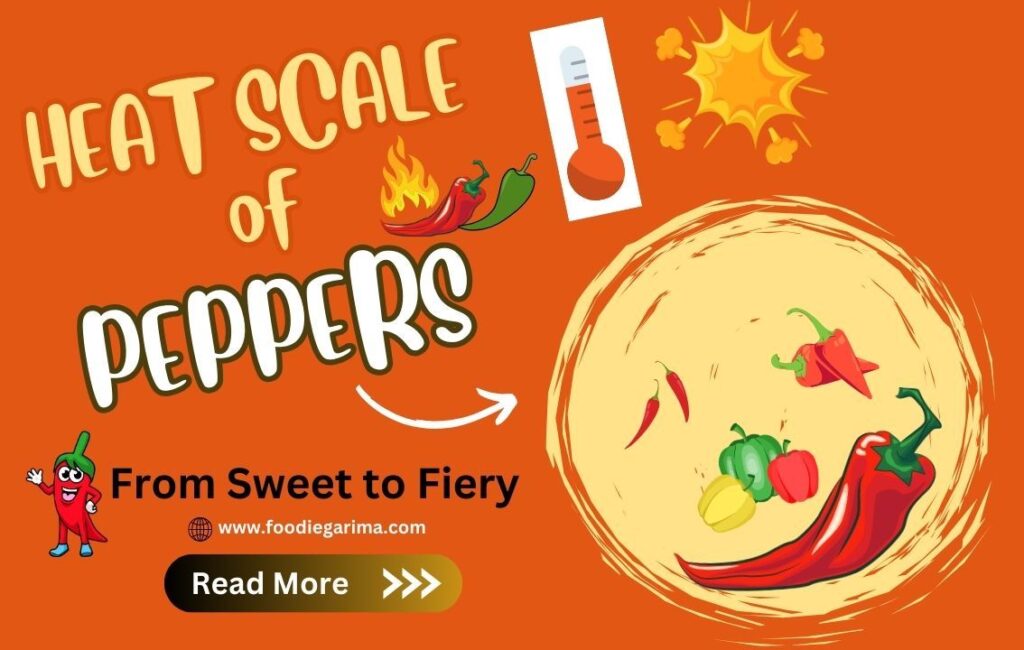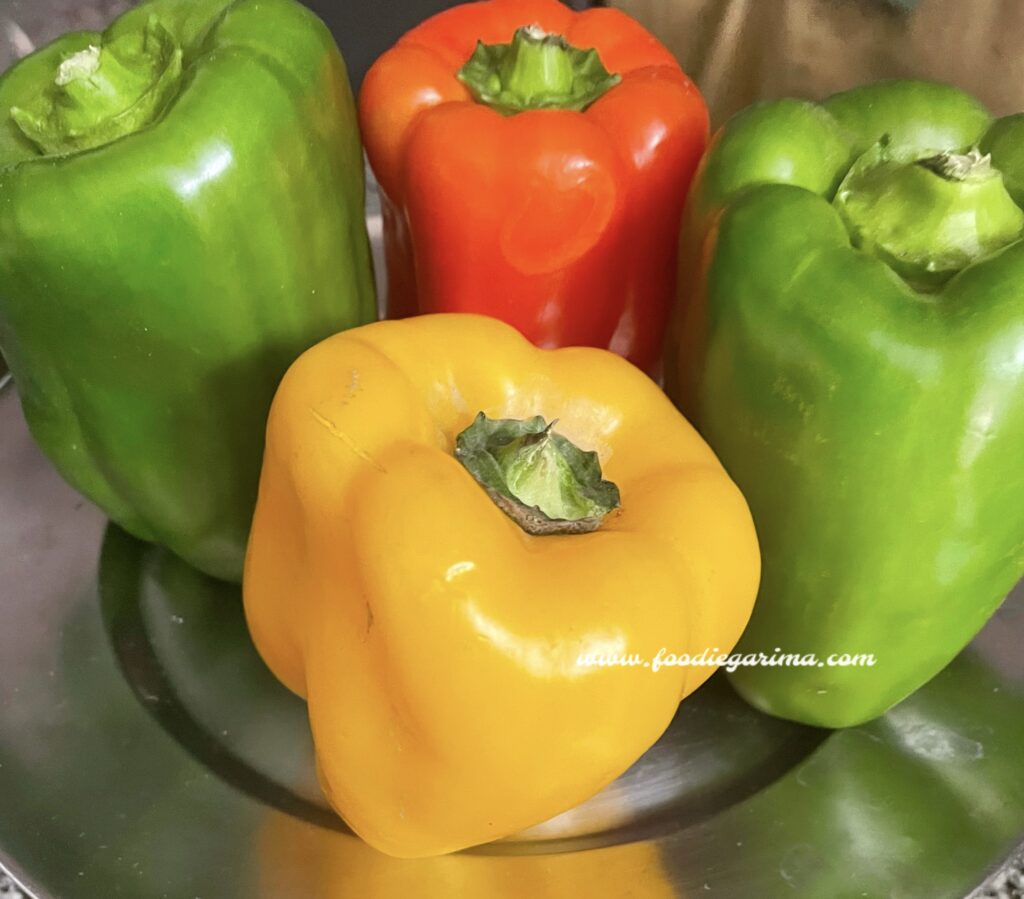4 January, 2025
The Heat Scale of Peppers: From Sweet to Fiery

Heat Scale of Peppers: From Sweet to Fiery
Peppers come in all shapes, sizes, colors, and most importantly, levels of heat. From the mild and sweet Bell Pepper to the fiery Carolina Reaper, Peppers add a dynamic range of flavor and spiciness to our dishes.
But how do we measure their heat?
The answer lies in the Scoville Heat Scale, a scientific method to gauge the spiciness of peppers.
Let’s explore the fascinating world of pepper heat levels and understand how to navigate this fiery spectrum.
What Is the Scoville Heat Scale?
The Scoville Heat Scale is the standard measurement for determining the spiciness of Peppers. Developed by Wilbur Scoville in 1912, this scale measures the concentration of capsaicin, the compound responsible for a Pepper’s heat.
- How It Works: Originally, the test involved diluting pepper extract with sugar water until the heat was no longer detectable. Today, scientists use High-Performance Liquid Chromatography (HPLC) for more precise results.
- Units: Heat is measured in Scoville Heat Units (SHU), with higher numbers indicating more capsaicin and, therefore, greater spiciness.


Mild Peppers (0–5,000 SHU)
These peppers are perfect for those who prefer flavor without the burn.
- Bell Peppers (0 SHU): Sweet and crunchy, bell peppers are ideal for salads, stir-fries, and stuffing.
- Banana Peppers (100–500 SHU): Mild with a tangy flavor, often pickled or used in sandwiches.
- Poblano Peppers (1,000–1,500 SHU): Slightly smoky, great for roasting or stuffing.
Medium Heat Peppers (5,000–50,000 SHU)
These peppers offer a gentle kick, adding spice without overwhelming the palate.
- Jalapeño Peppers (2,500–8,000 SHU): Widely popular, jalapeños are versatile and can be eaten raw, roasted, or pickled.
- Serrano Peppers (10,000–23,000 SHU): A step up from jalapeños, serranos are commonly used in salsas and hot sauces.
- Cayenne Peppers (30,000–50,000 SHU): Known for their fiery red color and heat, often used in powdered form.
Hot Peppers (50,000–300,000 SHU)
For those who love a fiery kick, these peppers bring significant heat.
- Tabasco Peppers (30,000–50,000 SHU): Famous for their use in Tabasco sauce, these peppers pack a tangy punch.
- Thai Peppers (50,000–100,000 SHU): Frequently used in Southeast Asian cuisine, these peppers are small but mighty.
- Habanero Peppers (100,000–300,000 SHU): Known for their fruity flavor and intense heat.
Super-Hot Peppers (300,000+ SHU)
These peppers are for the bravest of spice enthusiasts. Handle with caution!
- Ghost Pepper (Bhut Jolokia) (1,000,000+ SHU): Once the hottest pepper in the world, it’s used in extremely spicy dishes and sauces.
- Trinidad Scorpion (1,200,000+ SHU): Known for its sting-like heat, ideal for extreme hot sauces.
- Carolina Reaper (2,200,000+ SHU): Officially the hottest pepper in the world, delivering an intense, lingering burn.
What Factors Influence Pepper Heat?
- Genetics: Each pepper variety has a natural range of capsaicin levels.
- Growing Conditions: Sunlight, soil, and water can impact the heat level.
- Ripeness: Peppers tend to get hotter as they mature, with red peppers often being spicier than green ones.
How to Handle and Enjoy Hot Peppers Safely
- Wear Gloves: Capsaicin can irritate the skin; gloves help prevent burns.
- Remove Seeds and Membranes: These parts contain the highest concentration of capsaicin.
- Balance with Dairy: Milk, yogurt, or cheese can neutralize the heat.
- Start Small: If you’re new to spicy food, begin with mild or medium heat peppers.
Fun Facts About Spicy Peppers
- Birds Love Them: Birds are immune to capsaicin, which helps peppers spread their seeds.
- Capsaicin’s Benefits: Capsaicin is linked to pain relief, metabolism boosting, and heart health.
- Pepper Challenges: Super-hot peppers are popular in eating contests and spice challenges.
From the mild sweetness of Bell Peppers to the fiery intensity of the Carolina Reaper, the Scoville Heat Scale is your guide to navigating the world of Peppers. Whether you’re a spice enthusiast or prefer just a hint of heat, there’s a Pepper out there for everyone. So, next time you’re in the kitchen or at the market, you’ll know exactly what to pick to suit your spice tolerance.
FAQs
1. What is the hottest Pepper in the world?
The Carolina Reaper holds the title of the hottest Pepper, with over 2,200,000 SHU.
2. Are Red Peppers hotter than Green Peppers?
Generally, yes. Red Peppers are riper and can have higher levels of Capsaicin.
3. How do I reduce the heat of a Pepper in cooking?
Remove the seeds and membranes, and pair the dish with dairy products like yogurt or cheese.
4. Why do some people love spicy food?
Capsaicin triggers the release of endorphins, giving a pleasurable sensation often called a “spicy high.”
5. Can eating spicy Peppers be harmful?
While generally safe, consuming extremely hot peppers in large quantities can cause discomfort and digestive issues. Always enjoy them in moderation.